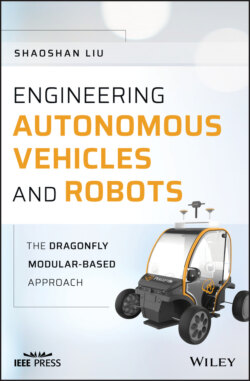Читать книгу Engineering Autonomous Vehicles and Robots - Shaoshan Liu - Страница 31
2.3 FlexRay
ОглавлениеThe FlexRay bus is a deterministic, fault-tolerant, and high-speed bus system developed in conjunction with automobile manufacturers and leading suppliers [3]. FlexRay delivers the error tolerance and time-determinism performance requirements for drive-by-wire applications.
Many aspects of FlexRay are designed to keep costs down while delivering top performance in a rugged environment. FlexRay uses unshielded twisted pair cabling to connect nodes together. FlexRay supports single- and dual-channel configurations which consist of one or two pairs of wires, respectively. Differential signaling on each pair of wires reduces the effects of external noise on the network without expensive shielding. Most FlexRay nodes typically also have power and ground wires available to power transceivers and microprocessors. Dual-channel configurations offer enhanced fault tolerance and/or increased bandwidth.
Most first-generation FlexRay networks only utilize one channel to keep wiring costs down but as applications increase in complexity and safety requirements, future networks will use both channels. FlexRay buses require termination at the ends, in the form of a resistor connected between the pair of signal wires. Only the end nodes on a multi-drop bus need termination. Too much or too little termination can break a FlexRay network. While specific network implementations vary, typical FlexRay networks have a cabling impedance between 80 Ω and 110 Ω, and the end nodes are terminated to match this impedance. Termination is one of the most frequent causes of frustration when connecting a FlexRay node to a test setup. Modern PC-based FlexRay interfaces may contain onboard termination resistors to simplify wiring.
